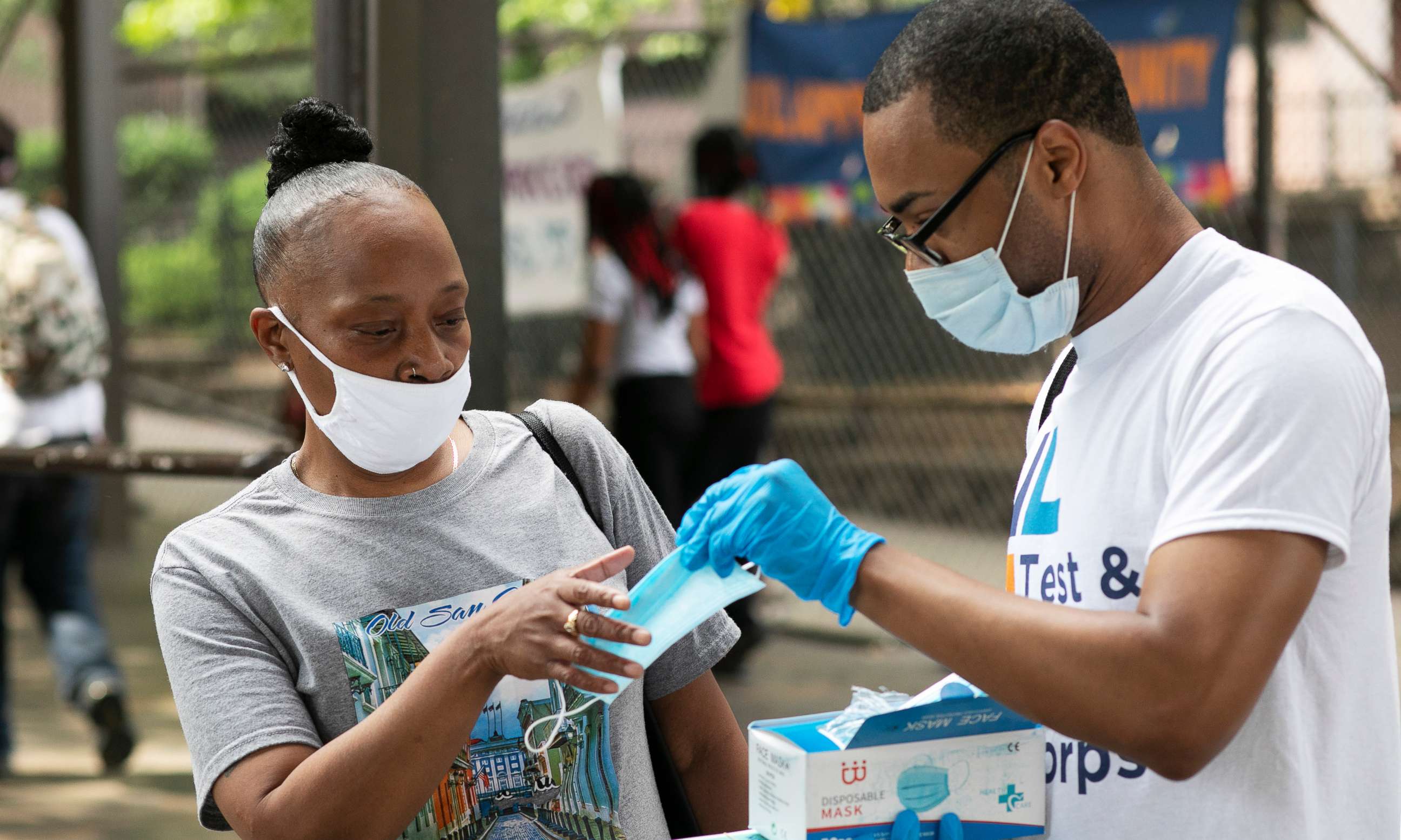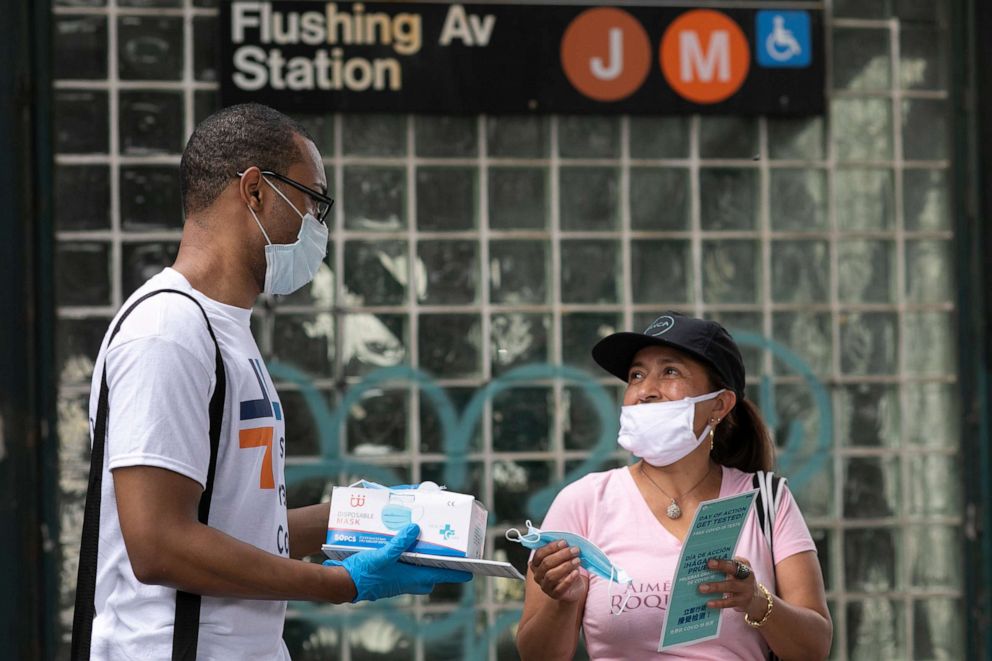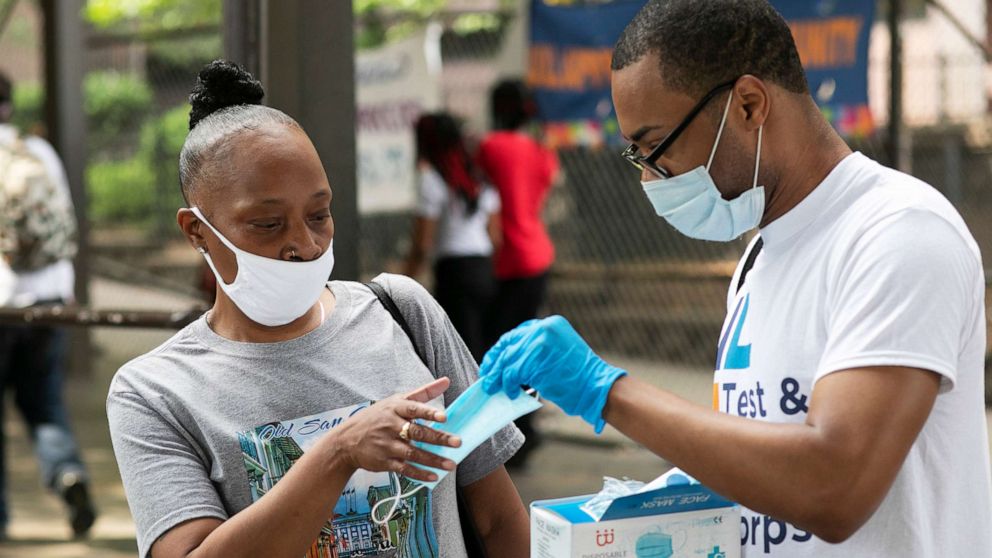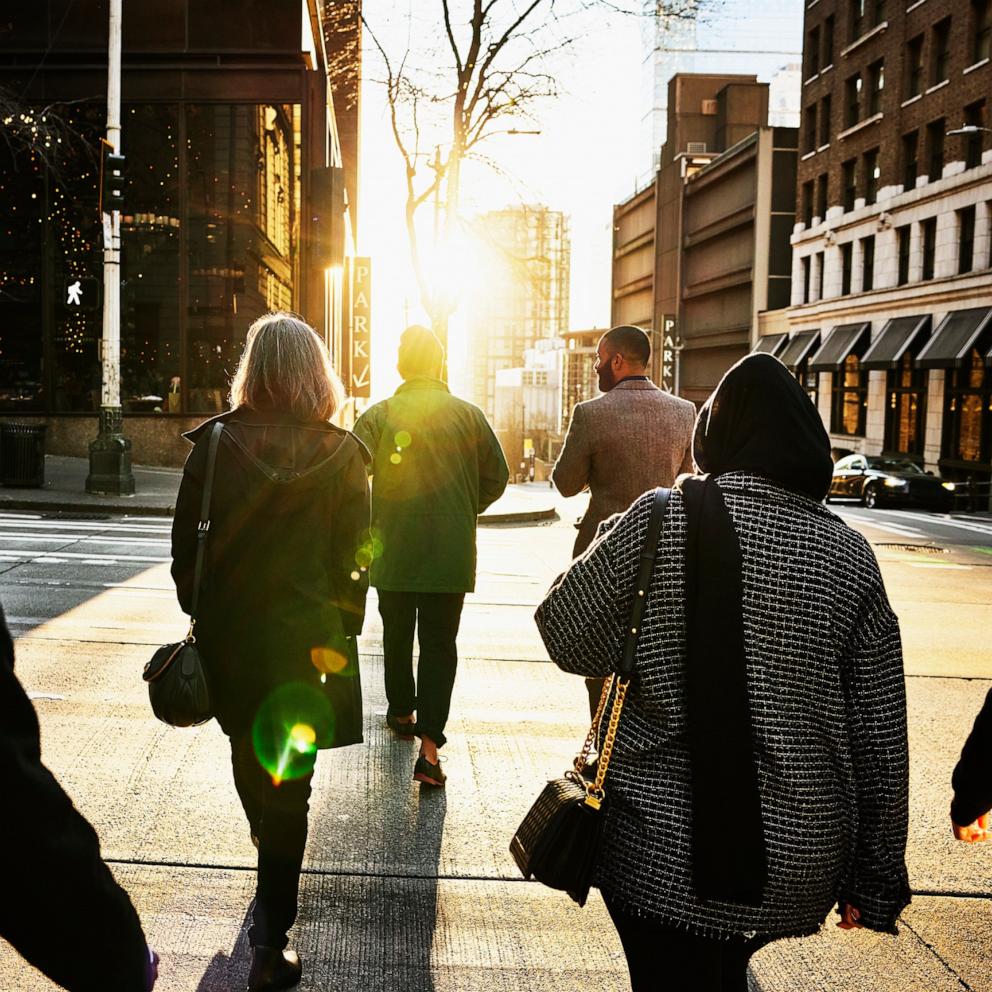Study finds high rates of positive COVID-19 tests in low-income NYC neighborhoods
As cases of coronavirus continue to skyrocket around the country, new details are emerging from New York City -- once the epicenter of the domestic pandemic. A recent study suggests that in some communities in the city, over 60% of residents tested positive for COVID-19 infection.
And low-income communities seemed to be hit the hardest, with zip codes in Queens, Brooklyn and the Bronx reporting the highest rates of positive results.
"We found that test positivity rates were higher in lower income areas," and "among the Black population," said Dr. Jim Crawford, co-author of the study and chair of the Department of Pathology at the Long Island Jewish Medical Center and North Shore University Hospital.
Prior research has shown that non-Hispanic Black people have a rate of infection that is approximately five times that of non-Hispanic white people. This discrepancy is consistent with overall trends in severe illness and death rates during public health emergencies for racial and ethnic minorities.
This study, which was conducted by Northwell Health's Feinstein Institutes for Medical Research and published in Clinical Infectious Diseases, offers a snapshot in time of some of the worst weeks in New York City's epidemic.
Specifically, the study found that cases of infection emerged rapidly and broadly across a widespread area in the greater New York City region, possibly suggesting that the infection was already quietly smoldering throughout communities prior to the onset of testing.
Residents were tested in real time using a nasal swab test that looks for active infections.

The first case of coronavirus in New York City was confirmed on March 1, 2020, after which there was an exponential growth of cases which rapidly overwhelmed the established health care infrastructure and many of the city's hospitals. Now, over four months later, the city is gradually reopening as the number of new cases continues to decline.
However, lessons can be learned from the pandemic's early course in the city. This study looked at all symptomatic patients with positive test results between March 8 and April 10. Authors found that the contagion spread was evident across numerous, widespread zip codes in the greater New York City metropolitan region.
Among those who tested positive, men were more affected than women -- and these differences grew more pronounced among the elderly. However, less than 1% of individuals younger than 25 had positive test results.
The CDC has found that the risk of being hospitalized for COVID-19 increases with age and 80% of COVID-19 deaths in the United States have been in adults 65 and older.
Despite the high rate of positive test results throughout the greater New York City region, it's difficult to use this study's findings to extrapolate whether enough of the local population has been infected to render herd immunity: the concept that a large enough portion of the community is immune to a disease to stop it in its tracks.
To answer whether herd immunity could exist in the city, we'd need a different kind of study that uses antibody tests to determine what portion of the population has been infected in the past. Recent antibody research found that about 20% of New Yorkers have had prior infections -- a far cry from the 60% experts say would be needed to achieve herd immunity.

For Crawford, the main takeaway from his study is that low-income communities were hit disproportionately hard during those dark weeks at the start of the city's epidemic.
"Further studies are needed to understand how populations are at risk of becoming infected," and to better understand the socioeconomic determinants of infection, he said.
Moving forward, Crawford hopes that the "information out of New York can help our colleagues to identify populations that are at risk in this country" as rates of infection climb in several areas of the country. He and other researchers at Northwell Health want to better understand the "genetic predispositions of patients and characteristics of the virus, in order to identify better ways to tailor treatment."
"The story is still being written in terms of the COVID contagion," Crawford said. "Time is of the essence in trying to stay ahead of the virus."
Shantum Misra, M.D., is a senior resident in internal medicine at Dartmouth-Hitchcock Medical Center and a contributor to the ABC News Medical Unit.




